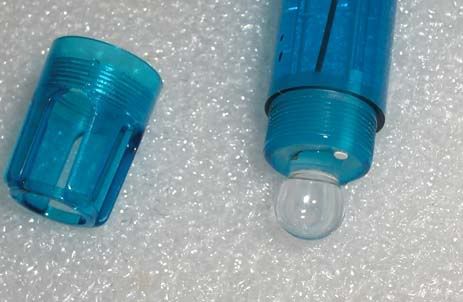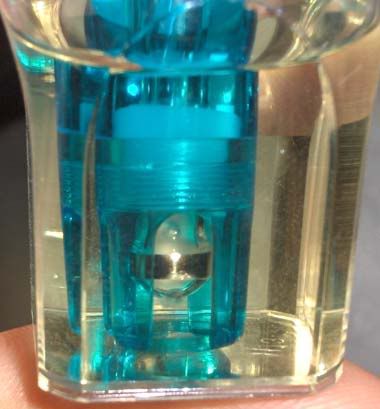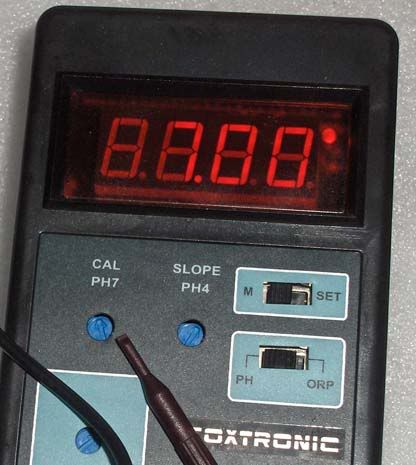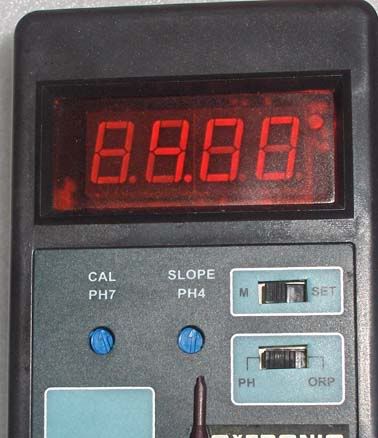
 |
|
|
|
#1 |
|
SiaoGu Gives You Wings
 Join Date: Jul 2001
Posts: 4,169
|
What is pH?
pH is a simplified measurement scale on how acidic or alkaline(basic) a particular liquid is. pH is a balance of basically 2 types of ions, the hydrogen(H+) ions and hydroxide(OH-) ions. It also can be loosely referred as the power of Hydrogen. The greater concentration of hydrogen ions, the lower the pH hence more acidic. If there is a higher concentration of hydroxide ions compared to hydrogen, the liquid would be alkaline. The normal pH scale ranged from 0(very acidic) to 7(neutral) to 14(very alkaline). |
|
|
|
|
#2 |
|
SiaoGu Gives You Wings
 Join Date: Jul 2001
Posts: 4,169
|
How does a pH electrode works?
Most pH electrodes consists of 2 juctions, glass bulb and a reference electrode(built-in) containing potassium chloride(KCL). The glass bulb is sensitive to hydrogen ions and will generate a small voltage across the 2 junctions. The pH meter measures this small voltage and translate it to pH values. This picture shows the sensitive glass bulb and the protective cover.  The glass bulb should be kept moist with pH7 buffer solution or potassium chloride. In the event that the bulb is dry, rinse the bulb in distilled water and allow the bulb to saturate in pH7 buffer solution for 15mins before calibration. Last edited by BarraCuda™; 15-07-2006 at 06:01 PM. |
|
|
|
|
#3 |
|
SiaoGu Gives You Wings
 Join Date: Jul 2001
Posts: 4,169
|
Why calibrate?
The accuracy of pH measurement depends largely on the quality of the electrode. However manufacturers cannot make pH electrodes that will give a absolute exact voltage at a certain pH value, hence there is a need to let your pH meter "know" the electrode. What type of calibration/buffer solution? pH buffer commonly come with pH4.00, pH7.00 and pH10.00. Any buffer solutions with reputable brands will do as they are traceable to national standards. If you are measuring acidic liquid, you should use pH4 and pH7 buffers. If you are measuring alkaline liquid, you should use pH7 and pH14. Why the difference? By letting your pH meter "know" what is the exact value at least 2 reference pH, the pH meter can better calculate the pH slope between these 2 values. That explains the need for different calibration solutions. |
|
|
|
|
#4 |
|
SiaoGu Gives You Wings
 Join Date: Jul 2001
Posts: 4,169
|
How to calibrate?
Rinse the pH electrode in distilled water, flick it dry. Submerge the pH electrode in pH7 buffer solution. Remember always start with pH7 irregardless of the other pH buffers. If not, the meter will have problems calibrating the 2 values. Connect the pH electrode to your pH meter (Note: always remember to only switch on or connect to your pH meter only when the pH electrode is wet. You will risk damaging the probe if its dry)  Give it a good stir to remove all bubbles on the bulb, let the readings stablise before adjusting the knob.  Disconnect the pH electrode from the pH meter or switch off the power. Rinse the electrode in distilled water, flick dry. Repeat the process for pH4.  You can rinse and dip back into pH7 buffer to verify your results. Wait a min, why the value drifted?!? It was pH7.00 minutes ago and now its pH7.03!! |
|
|
|
|
#5 |
|
SiaoGu Gives You Wings
 Join Date: Jul 2001
Posts: 4,169
|
Why the difference?
Very simple, temperature difference and contamination can cause such drifting. Most pH buffers are designed to be calibrated at 25deg C, as their pH is dependent on temperature. However room temperature should be good enough for our usage. Probe contamination from different buffer solution, distilled water and dilution of buffer solution can cause pH readings to drift. Do not be paraniod over this, its normal. |
|
|
|
|
#6 |
|
SiaoGu Gives You Wings
 Join Date: Jul 2001
Posts: 4,169
|
Here is an article on proper pH electrode storage.
http://www.arofanatics.com/forums/sh...d.php?t=109392 Please free to ask questions here, I will update the FAQ post accordingly. |
|
|
|
|
#7 |
|
SiaoGu Gives You Wings
 Join Date: Jul 2001
Posts: 4,169
|
FAQs
Is it true that the probe can be recharge? Some says that once the probe is "worn out", empty the potasium choride in the probe and replace with new/fresh ones again. Most probes are epoxy sealed and "non rechargable". However, there are models in the market that allows the replacement of potassium chloride. I use battery water to wash my probe....it's distilled water....isn't it? Battery water is originally sulphuric acid but there are distilled water being sold as battery water as well. Look at the content label and make sure that its pure distilled water with no addictives added. Last edited by BarraCuda™; 16-07-2006 at 02:39 AM. |
|
|
|
|
#8 |
|
Guest
Posts: n/a
|
Is it true that the probe can be recharge? Some says that once the probe is "worn out", empty the potasium choride in the probe and replace with new/fresh ones again.
|
|
|
#9 |
|
Guest
Posts: n/a
|
thank you. fanatastic thread!
 can we have a orp thread too. i newbie. |
|
|
#10 |
|
Guest
Posts: n/a
|
Thanks for sharing and imparting this valuable information.

|
|
|
| Currently Active Users Viewing This Thread: 1 (0 members and 1 guests) | |
|
|